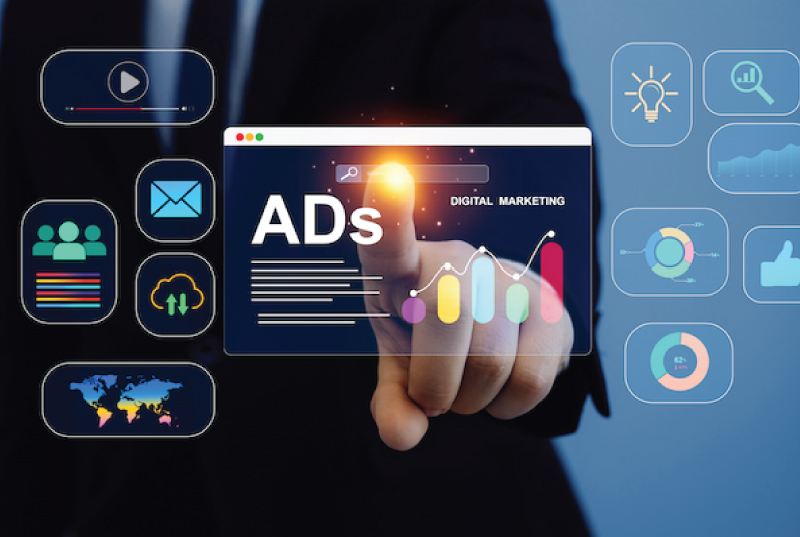3 Steps to Wowing Buying Committees with B2B Advertising
Learn why B2B advertisers need a DSP that's custom-built for B2B

Kathy Capeluto
Content Marketer, Demandbase
B2B organizations that adopt account based marketing/ABM and use a platform purpose-built to provide an account-first context for their data management and account engagement efforts had a return-on-investment of 367 percent in three years and a payback period of less than six months, according to a Forrester 2022 Total Economic Impact™ Study. ABM works in B2B.
But the way B2B sellers look at engaging accounts has traditionally and too often been shaped by ineffective, lead-first approaches taken from B2C. Buying cycles in B2B are different from B2C, where an individual seeking to buy shoes can make an immediate decision to buy and then click an “order now” button. B2B buying, and therefore B2B advertising. is much different.
B2B Advertising Needs an Account Context
“When we look at programmatic advertising in the B2C world, it’s largely targeting individuals making quick decisions on quick transactions,” says Gareth Noonan, General Manager, Ad Cloud, Demandbase. “In the B2B world, buying is far more nuanced. Buying cycles are extended, buyers are considering big ticket purchases, and there are multiple influencers, recommenders and decision-makers involved in the process – you have the concept of a buying committee.”
Convincing one member of a 10-member buying committee that you’re the best B2B provider will not result in a sale because B2B and B2C buying journeys are fundamentally different. With an all-important account context in mind, how can B2B sellers go about wowing a buying committee that makes a collective buying decision? This blog post describes a three-pronged approach to doing exactly that with B2B advertising. The approach described below is taken from a Demandbase on-demand video, called a three-legged stool approach to B2B Advertising (free to access) hosted by Demandbase’s Gareth Noonan.
Step #1: Identification
B2B advertisers must begin with a proper account context, meaning they need to identify and target the members of an account’s buying committee. A demand-side platform/DSP “should never serve an Ad that has not first been associated with one of your target accounts or one of your specific target people lists,” says Noonan. That’s just wasting ad spend and impressions on people who don’t influence account purchasing.
Step #2: Understand Account Intent (Via Context and Content)
Having insight into what content particular members of a buying committee are consuming gives you insight into where they are in the buying journey (i.e., context) and enables you to prioritize what actions you might take to move their journey toward a closed deal.
Noonan makes the point that intent signals are far different in B2C than in B2B. “If a B2C buyer has looked at a pair of boots, selected a size, perhaps selected a color, and dropped them into a shopping cart, they still might not be ready to complete the transaction. B2C advertisers will bid very high on their DSP to win impressions and show that B2C buyer those boots again because they’ve shown clear buying intent.”
When you’re working with an account context and a buying committee, on the other hand, intent signals must be viewed collectively, analyzed based on the buying group as a whole.
Step #3: Intent-Based Bidding
Effective ad spend in B2B is about using your budget to serve Ads to accounts that are currently in-market, actually looking for your products and services. You want to bid for ads based on an account-based understanding of buying intent, one that encompasses the buying committee concept, not a lead-based, B2C understanding of intent.
A DSP for B2B “delivers an account-based understanding of intent around buying committees and people who are reading and researching topics that provide a very high level of confidence that they’re in-market for the B2B products and services you’re offering,” says Noonan. That understanding allows you to target impressions and bid for ads efficiently, without wasting your spend.
Your targeting and bidding can be even better “if your B2B DSP is also connected to an ABX platform so that the consistency of signal around account selection, account prioritization, and account intelligence is feeding directly into your B2B buying platform,” explains Noonan, “as opposed to taking all of those key insights and segmentations out of an ABX platform and putting them into a third party B2C DSP that really has no concept of accounts and buying committees.”
The Bottom Line: Use a DSP Built for B2B
B2B advertisers need a DSP that’s built specifically for an account context and with buying committees in mind. Using a B2C DSP for your advertising needs simply wastes ad spend and doesn’t account for the complexities of B2B buying. “Specialization matters for DSPs,” concludes Noonan, “there are retail DSPs like Amazon, Walmart, Target, and more. There are location-based DSPs and even app install DSPs, so why shouldn’t there be a DSP to serve the nuanced advertising needs of B2B sellers?”
Learn more about Demandbase’s DSP built specifically for B2B.

Kathy Capeluto
Content Marketer, Demandbase



